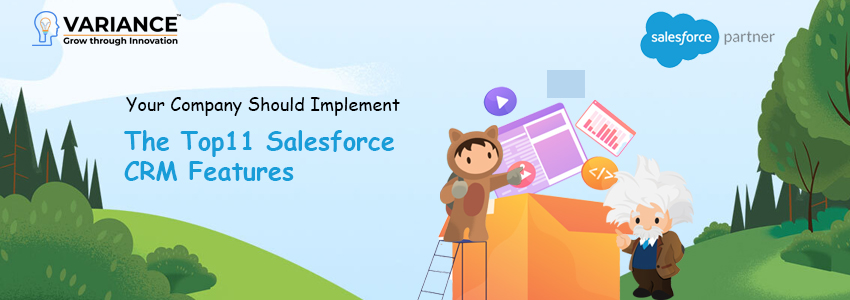
When compiling a list of the best CRMs, it is impossible to leave out Salesforce. Salesforce CRM is a game-changing piece of software for both small and large businesses that are looking to find ways to increase customer satisfaction in every way possible because of its exceptional features and functionality for corporations, developers, and commercial customers.
There are numerous CRM platforms available, and researching what they can offer will help you determine which one is best for your business. Perhaps you require a CRM to track leads, monitor customer interactions, and keep track of contacts. Different CRMs may have distinct capabilities that can assist you in narrowing your search, such as the ability to modify the platform to your specific needs or create a reporting structure that meets your specific requirements.
If you’re a Salesforce aspirant or an organization looking to train its employees on Salesforce features and capabilities, you’ve come to the right place. This article will give you a rundown of 10 Salesforce features that anyone who enjoys this CRM should be familiar with.
The following are 11 Salesforce CRM features that your company should use:
1. Lightning App Builder (and Lightning Components):
The Builder is one of the most valuable features available. Anyone may build an app using Salesforce Lightning’s component-based framework, even those without any programming experience. You can create a professional-looking app with just a few clicks and touches!
For generating Salesforce Lightning pages or using them in the mobile app, this is a straightforward point-and-click tool. With this, you can reorder pages to highlight key information and hide less vital details. Team members that need to edit pages will find this functionality to be extremely helpful.
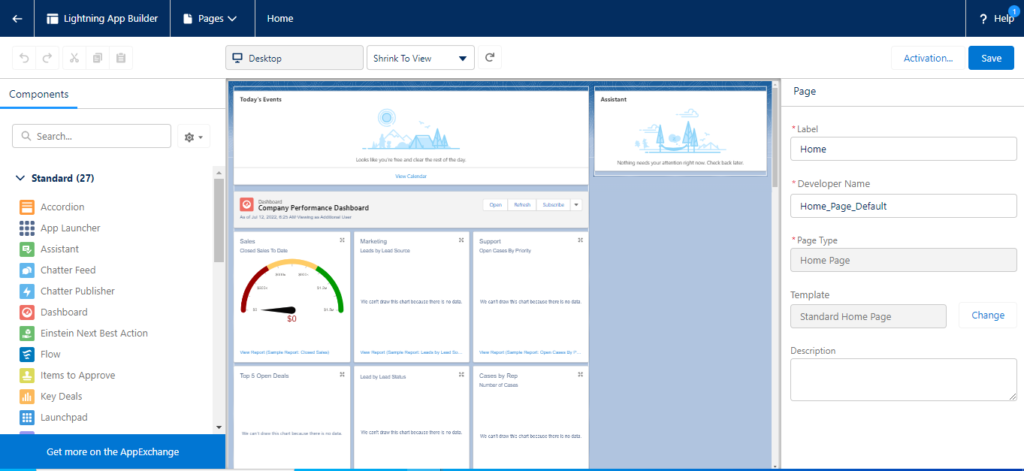
This is divided into three sections: Lightning Exchange components created by various Salesforce partners; Salesforce.org pre-built components; and its unique parts. Its Lightning components may be dragged into the canvas and are characterized as compact, flexible, and reusable parts that you can add to a Lightning page in the Lightning App Builder.
2. Salesforce Reports & Dashboards:
The reality is that seeing and truly comprehending data is critical for business survival. You cannot cut costs or increase profits without knowing the factors influencing your business. You cannot cut costs, increase revenue, or allocate resources wisely. Salesforce reports and dashboards provide quick and dependable answers in accounting and sales.
Salesforce provides several pre-configured reports, but users can also create custom report types. Creating your own custom reports can provide you with even more insights into your Salesforce data. Later, we’ll go over how to create custom report types in greater detail.
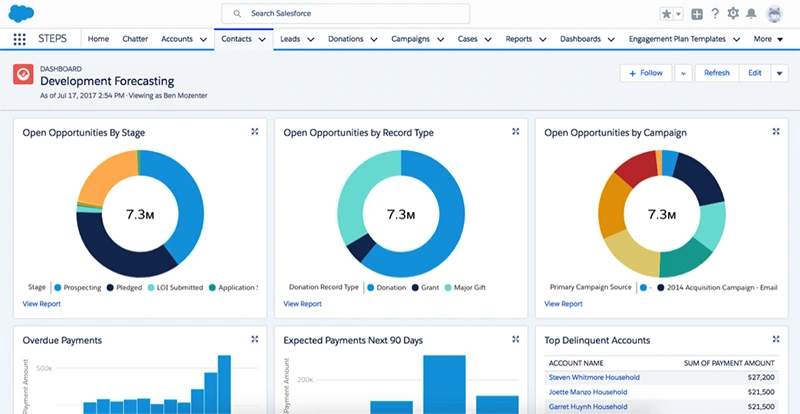
These pre-built analytics from Salesforce are the “go-to” choice for speedy reporting. As can be expected from the most widely used CRM in the world, it is robust, user-friendly, customizable, and appropriate for companies of all sizes. Salesforce reports are a set of filtered records.
Salesforce dashboards are graphical representations of Salesforce reports. They enable you to view your key metrics in a variety of ways. You can, for example, have multiple dashboard components from a single report that display different information.
The Lightning Report Builder is separated into two sections:
- Choosing which fields to include in the report’s outline is the first step.
- Selecting which records to exhibit can be done using filters.

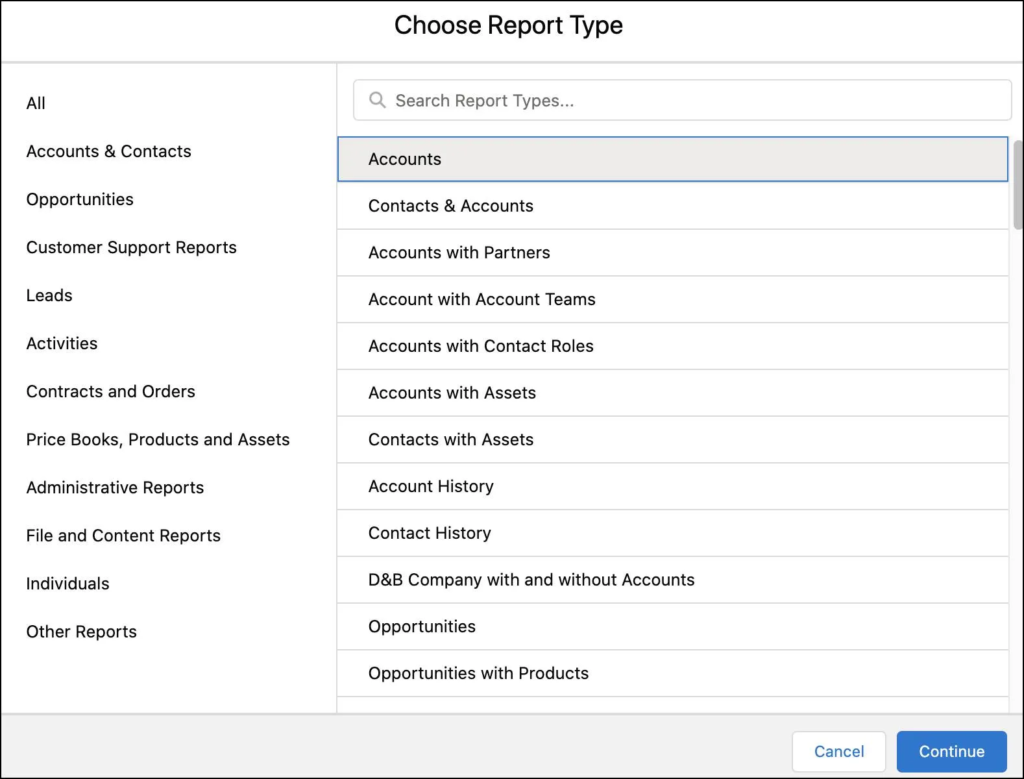
Adding charts and graphs from a report to a Salesforce dashboard is now available! To put it another way, the dashboard displays report visualizations. Data is compiled into aesthetically beautiful representations using the Salesforce feature/tool “Dashboards,” which includes charts, bar diagrams, pie charts, tables, funnel charts, leaderboards, graphs, and more.
Revenues, leads, and conversions are just a few of the things a firm may track using dashboards. Think about the crucial business indicators listed below.
- Modifications have been resisted or blocked.
- existing or potential customers.
- Scoreboards for salespeople display success rates and the highest sales.
- Salesforce’s pipeline’s current state
- current issues with top accounts’ support.
- The typical amount of time it takes a salesperson to conclude a case
- In circumstances where Service Level Agreements (SLAs) are probably going to be broken.
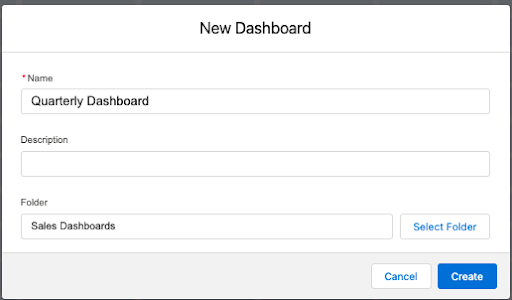
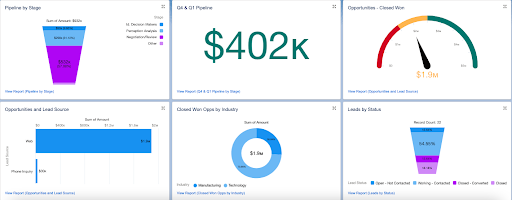
Furthermore, do you understand what Salesforce dashboard filters are? Dashboard filters are drop-down lists that appear at the top of a Salesforce dashboard. After a Salesforce Admin has made them, users can delve even deeper into the data. For instance, adding a “Region” filter would only display sales information for that region.
3. Forecasting in Collaboration:
This predicts how well sales will do going forward. Salesforce collaborative forecasting allows businesses to predict future sales performance and prioritize tasks based on actual revenue predictions from the sales pipeline. The projected revenue from sales is shown in the forecast.
The framework for forecasts is:
- Categorization forecasting
- Duration of forecasting
- group of products.
4. Add value to your salesforce org:
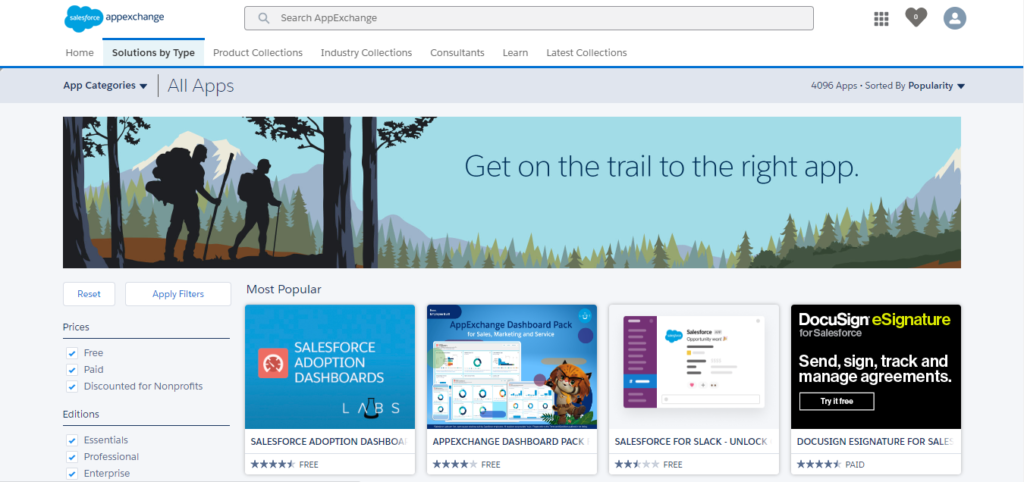
It is an ecosystem of 5000 ready-to-install Salesforce apps that allows companies to integrate the functionality of Salesforce across their customer-facing teams and departments.
There are 157 Lightning-ready 3rd party applications available in the Salesforce store. All of the applications available in this store have been thoroughly reviewed and integrated to help businesses operate smoothly on the Salesforce platform.
When businesses migrate to the Lightning interface, these 157 Lightning-compatible applications will be most useful in ensuring customer success. Finding applications that are compatible with Lightning is simple; just look for the lightning symbol before the apps.
5. Territory Administration:
This capability is the appropriate answer for guaranteeing that flawless processes are followed throughout your entire firm, regardless of size. Roles, responsibilities, and hierarchies are arranged, and a hierarchy of accounts is built, similar to the segments as outlined above. Salesforce’s Enterprise Territory Management solution makes this easier than ever before.
These boundaries don’t have to be strict. They may be determined by role, location, or any other aspect that works best for your sales team.
6. Marketing Cloud:
This Marketing Automation System automates communications over a range of channels, including email, social media, mobile apps, SMS, and websites. It offers an email marketing solution that is both automated and personalized. Its function assists businesses in locating and exploring highly automated (artificial intelligence-enabled) and tailored email marketing solutions.
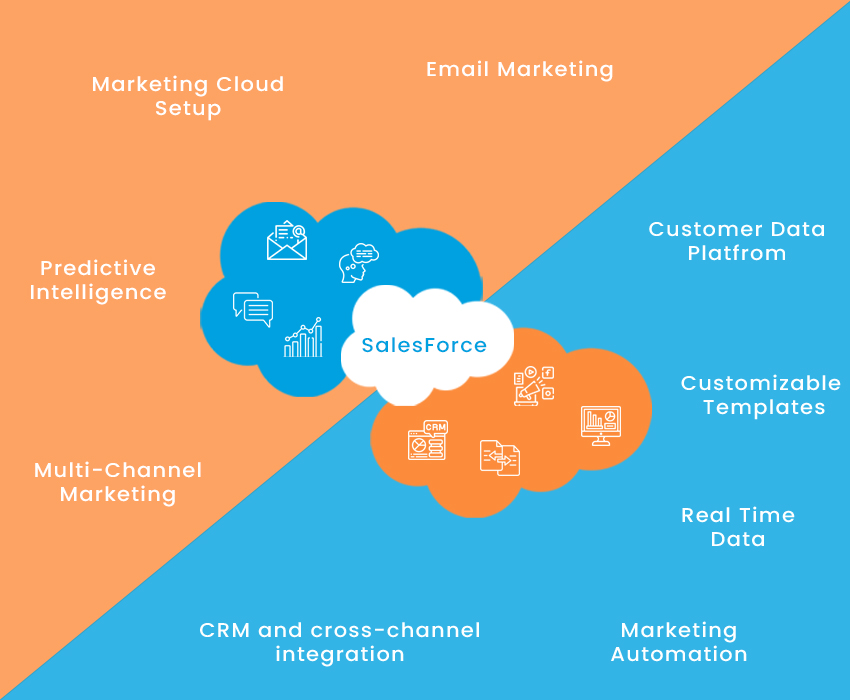
Customers that are likely to interact with their products are classified in the new market. Free marketing templates offered by the program enable businesses to close deals more quickly and with less effort. Businesses utilize Salesforce Marketing Cloud (SFMC) to integrate all of their marketing channels on a single platform.
7. Commerce Cloud:
As a result, the shopping experience is seamless. Salesforce’s Commerce Cloud is an e-commerce tool that provides customers with a streamlined order placement process and an integrated shopping experience. It meets the unique needs of mobile shoppers and converts them into customers with a single touch.
It offers numerous customization options for customers who do not fit into one of the one-size-fits-all categories. The Sales Cloud includes cases and email-to-case, whereas the Service Cloud includes welfare benefits and accomplishments.
8. Chatter & Activity Timeline:
This is instant messaging software for group collaboration. There are several messaging platforms for connecting organizations and teams that are simple and inexpensive to use, but the main issue is that they operate outside of the company’s CRM and are not completely secure. This is an instant messaging system similar to Twitter or Facebook (with features like file attachments, “@ and # uses,” and threaded chats).
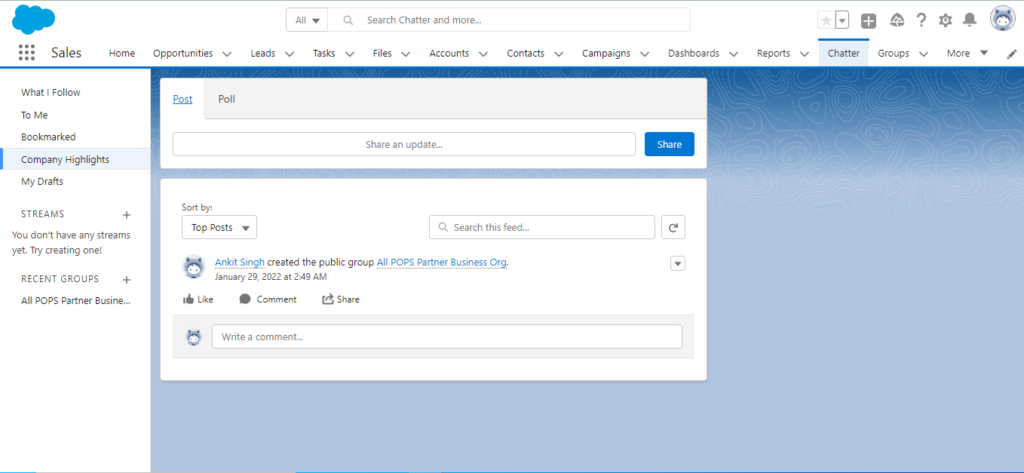
The technology saves the conversation in the company’s Salesforce CRM, links it to the company’s records, and assists Salesforce users in the following ways:
- Users can work together on a specific opportunity or case.
- Email or other messages can be used to continue the conversation in CRM, and large files can be quickly and easily shared.
- Any new information should be made available to the public as soon as possible.
- It is simple to keep track of clients and records without having to solicit updates from coworkers.
Activity Timeline:
The activity timeline component displays all open tasks and upcoming meetings, as well as all activities completed on an opportunity, lead, account, or contact. To mark a task as completed, simply check the box. Because it is a lightning component, you can easily drag and drop it where you want it to appear in the lightning app builder.
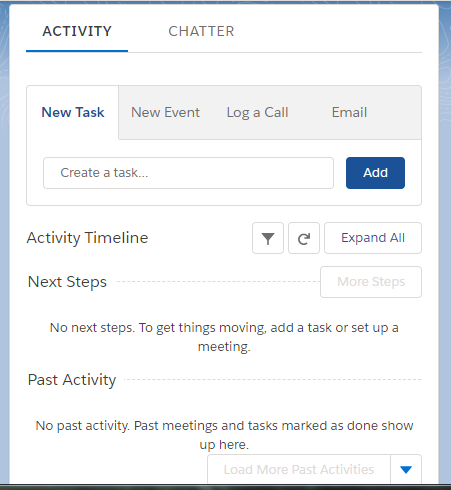
9. Salesforce Mobile App:
This enables you to make changes to Salesforce data from anywhere. With the help of the Salesforce mobile app, businesses can access data or documents away from their offices. This functionality allows users to:
- Even when they are not at work, they use mobile devices such as phones or tablets to update records in real-time.
- Before visiting a client’s office, they should check their phones for any open support cases.
After the encounter, reps can adjust their prospects or view a dashboard from anywhere outside the office.

10. Lightning Snap-Ins:
This enables client-business coordination while on the move. One of the most important Salesforce features available through the cloud lightning service is snap-ins. The features can be used to enhance the functionality of apps or websites.

Service channels can be integrated into native business apps to provide a more connected and close-knit client experience no matter where they are. Users can communicate with businesses at any time and from any location, and applications and websites can be customized to serve as a mobile center for clients.
11. Steelbrick by Salesforce:
A Salesforce product called Steelbrick makes managing Configure-Price-Quote apps simpler for Salesforce customers with high growth. Users can easily create real-time and effective sales quotes with no errors, inefficiency, or delays using the CPQ software or app.
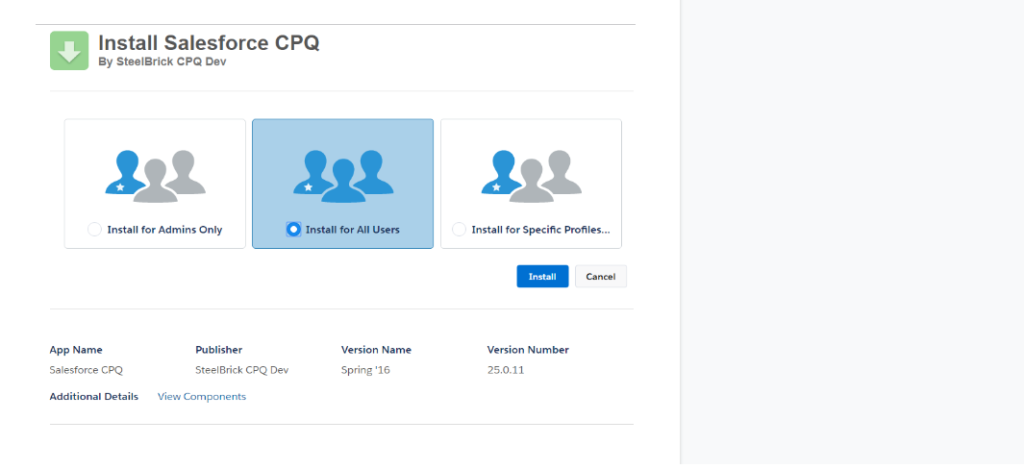
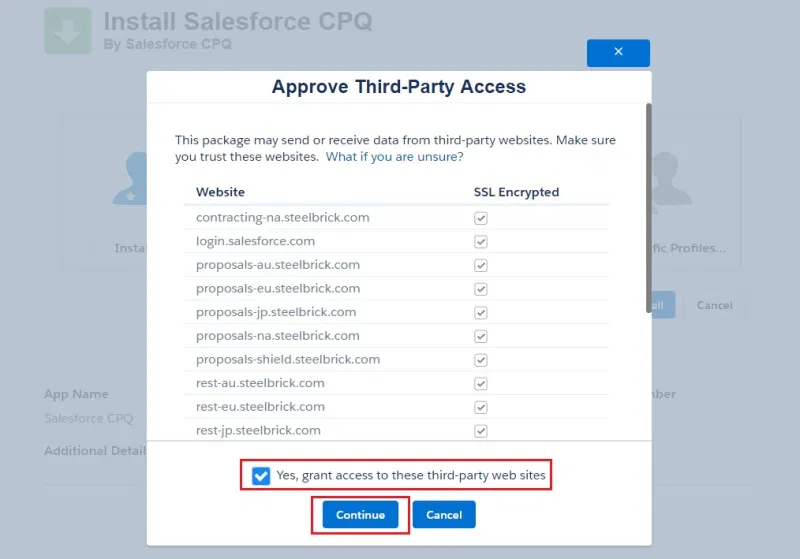
- It helps sales representatives complete their tasks more effectively by increasing sales.
- Ensure that contracts, quotes, and opportunities are free of errors and bottlenecks.
- Improve the accuracy of your proposals and quotes.
- More transactions will be completed, and the emphasis will shift to increased output.
- Assisting with cross-sells and up-sells increases deal sizes.
- It reduces the sales cycle and saves marketing representatives a significant amount of time and effort.
Take Away:
While Salesforce orgs can be tailored to a company’s specific needs, Salesforce administrators will gain a better understanding of the platform’s capabilities as they work with it. If you keep up with Salesforce updates, you won’t miss out on the latest and greatest in Salesforce technology.
Some of the aforementioned Salesforce functionalities might be unfamiliar to you. However, if you use Salesforce regularly for your business, these features will undoubtedly help you improve operational efficiency.

Do You Need more information?
For any further information / query regarding Technology, please email us at info@varianceinfotech.in
OR call us on +1 630 534 0223 / +91-7016851729, Alternately you can request for information by filling up Contact Us
 Please wait...
Please wait...
Leave a Reply